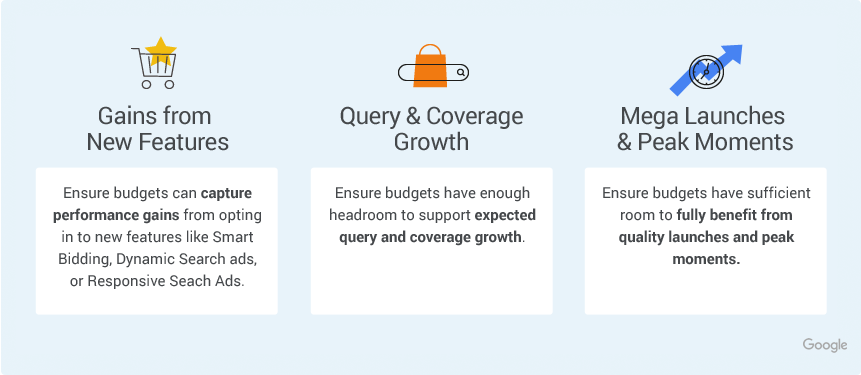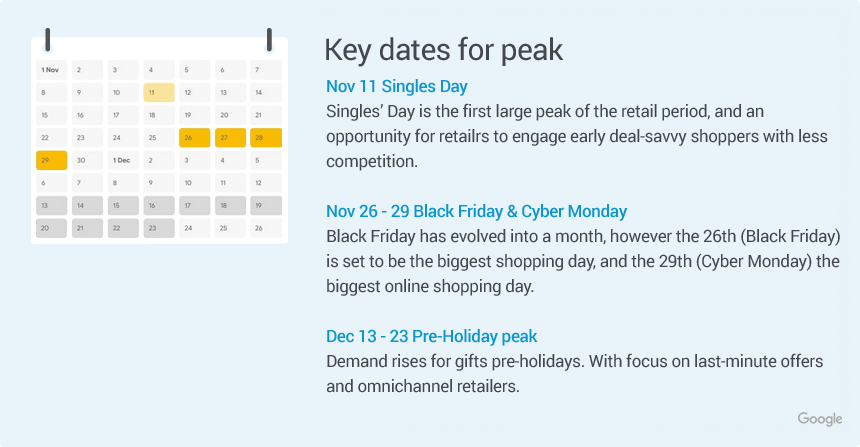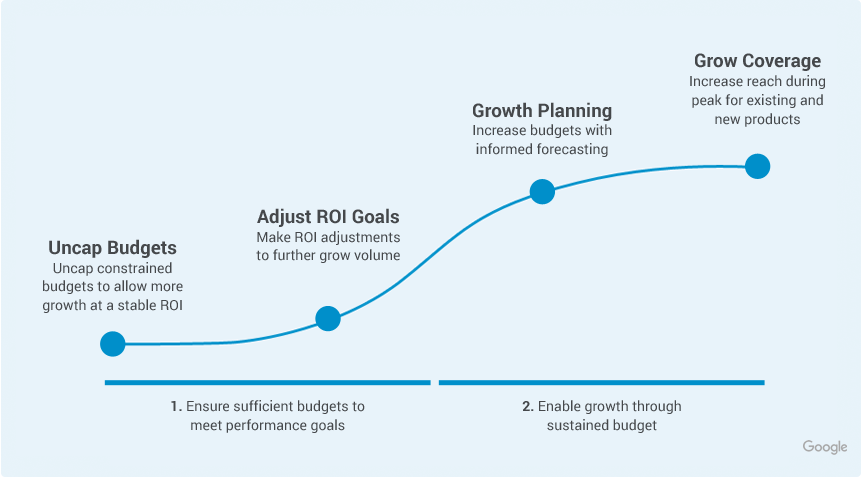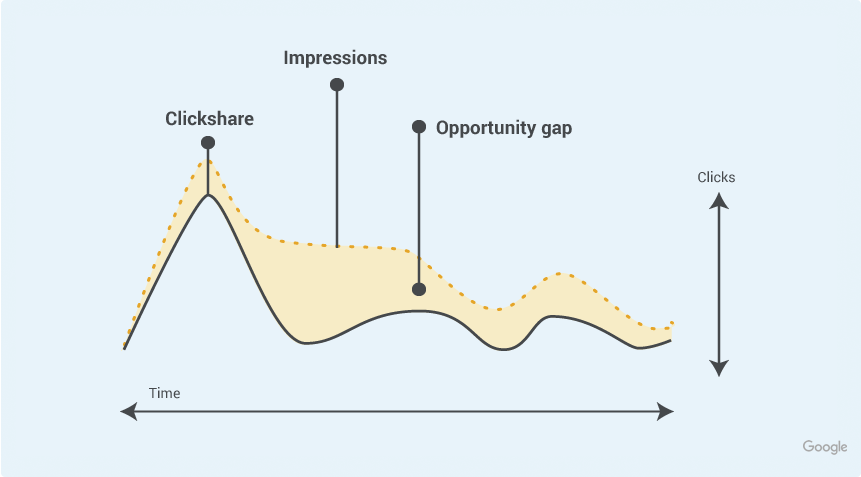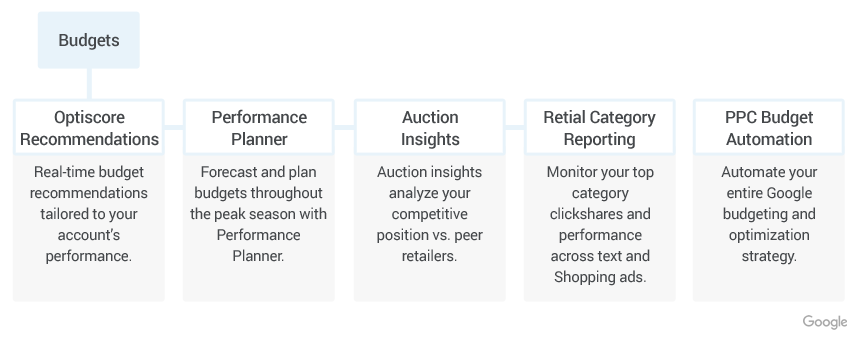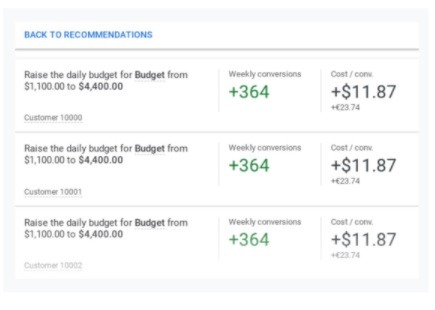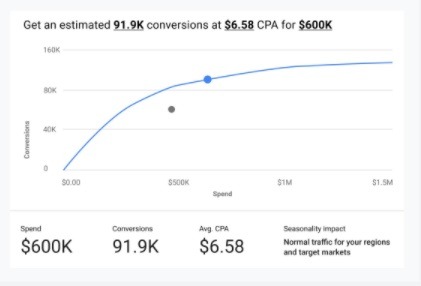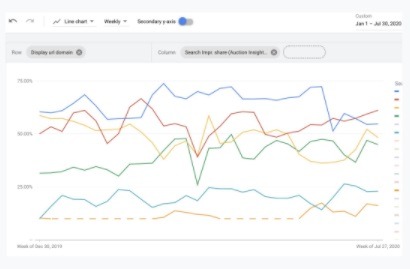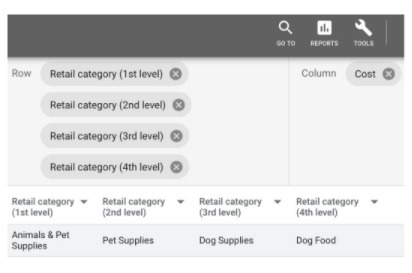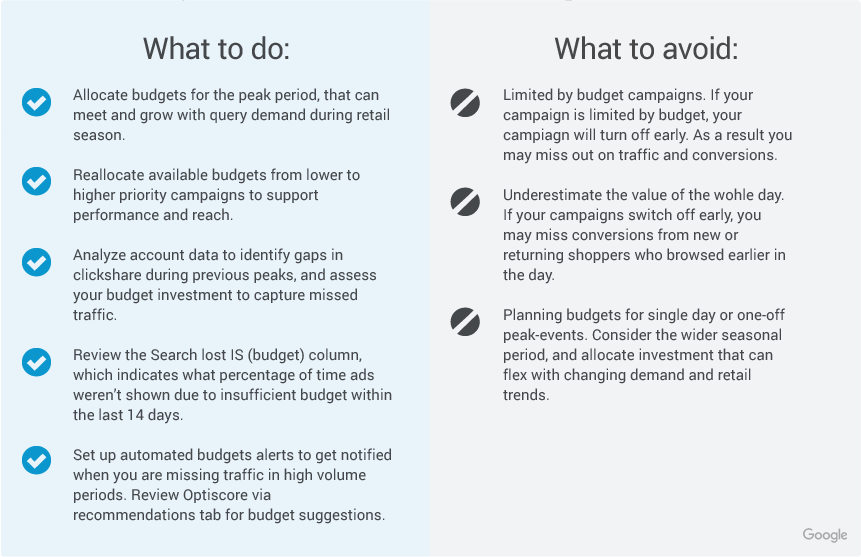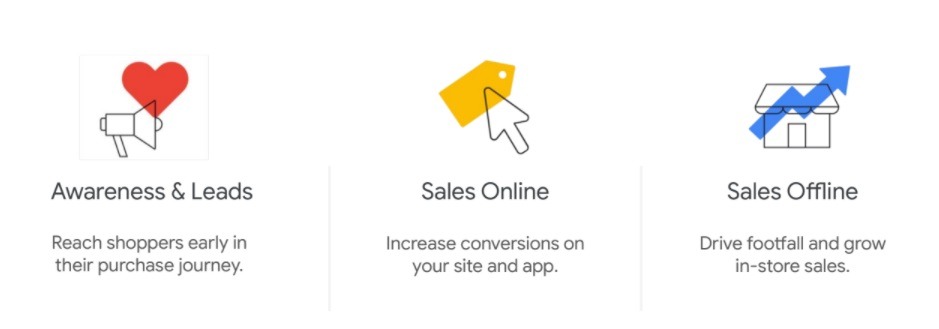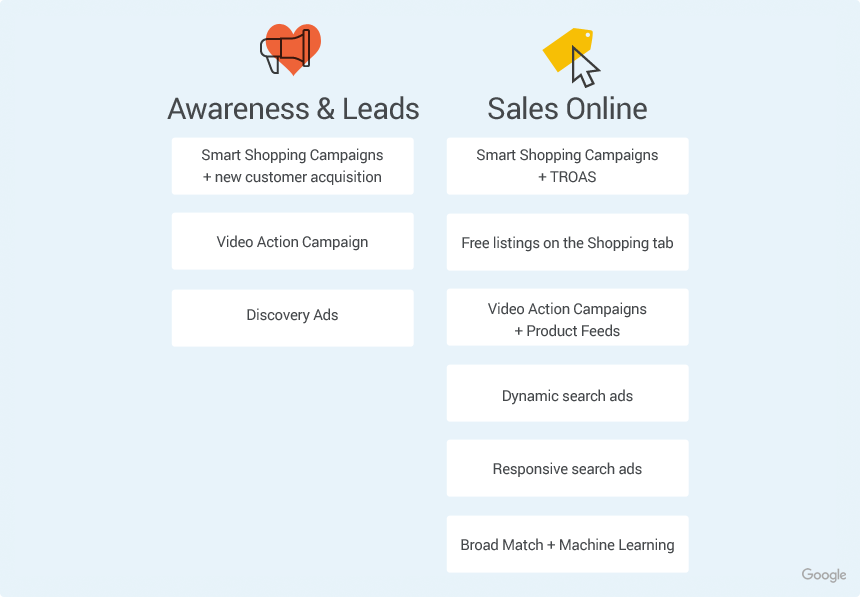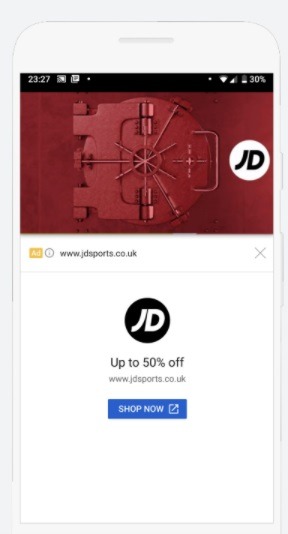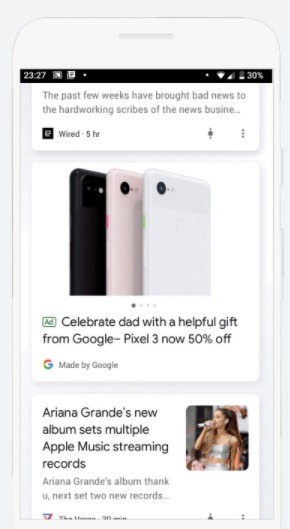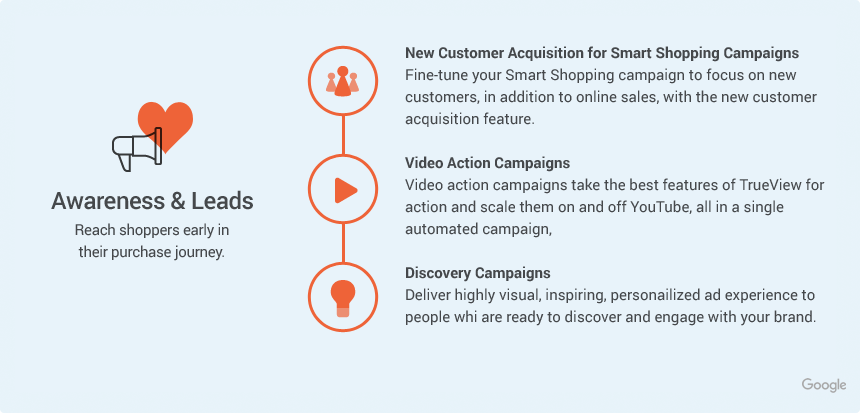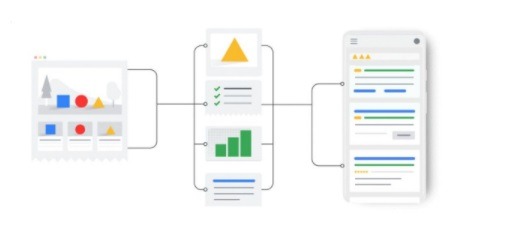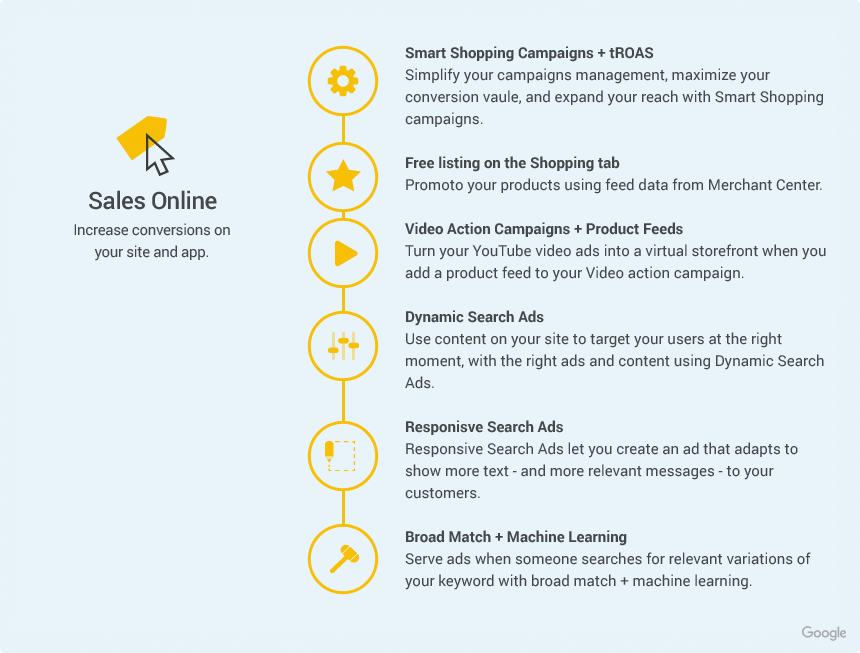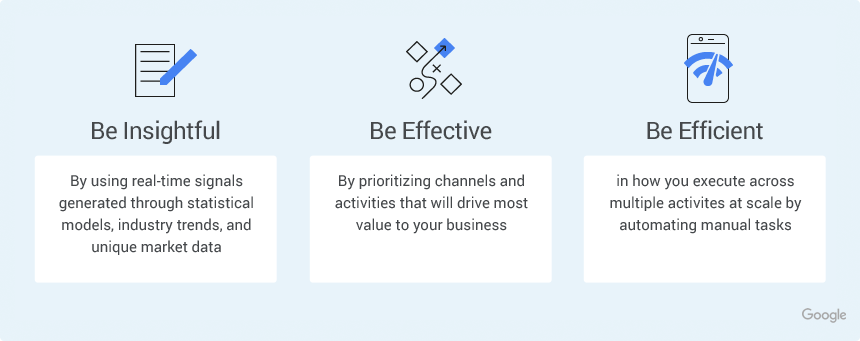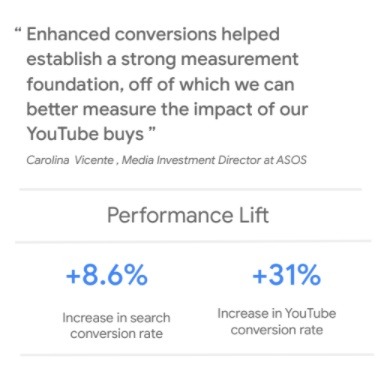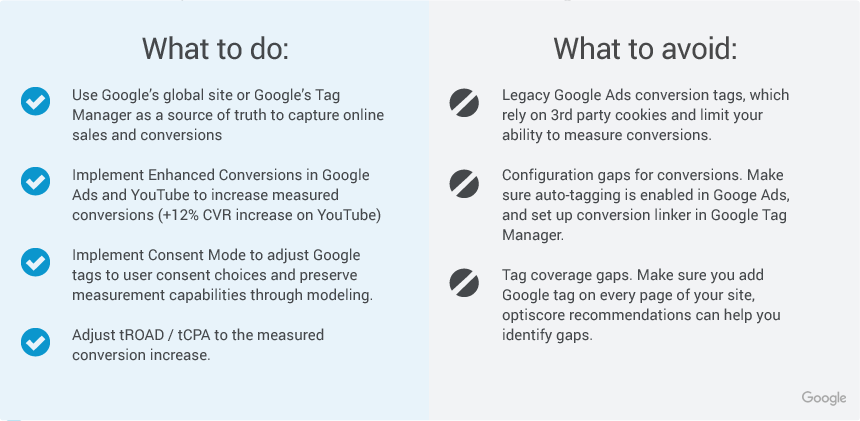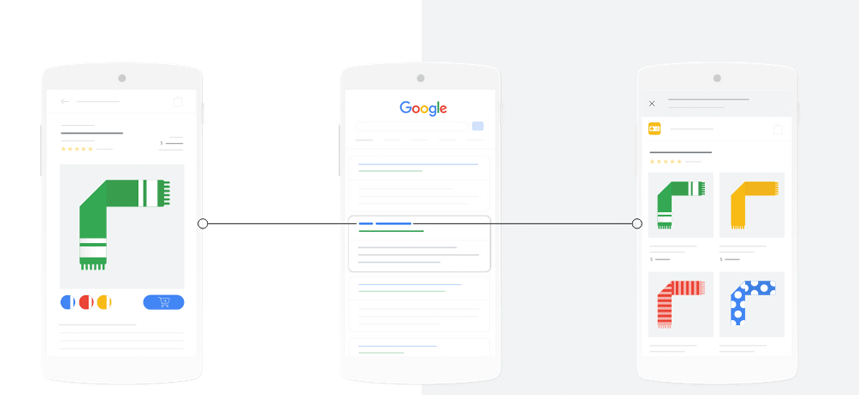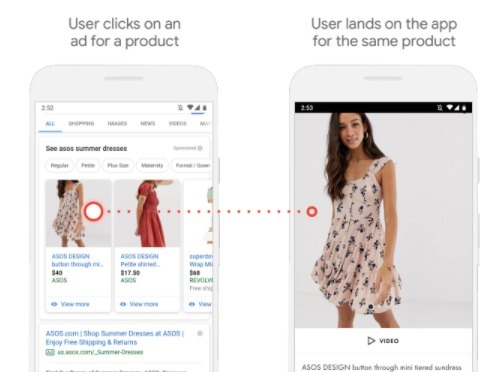[In Partnership with Google Ads]
Looking for a complete holiday Google PPC marketing strategy for peak season? You’ve come to the right place.
According to the just-released Peak Season eCommerce Shopping and Marketing Trends Data Report, eCommerce holiday sales alone were forecast to rise +11% in 2021.
However, with continued growth comes increased competition.
It’s vital for eCommerce managers and marketers to upgrade and optimize their 2022 holiday PPC marketing strategy so they can compete for the $1+ trillion in possible revenue up for grabs this year.
And time is running out.
It’s estimated that queries for Black Friday are anticipated to start now, in October, and span 10 weeks into December.
So what do marketers need to do to ensure that they are reaching the right holiday shoppers with the right Google PPC holiday campaigns at the right time?
2022 Holiday Shopping Google PPC Strategy for eCommerce Retailers
2022 Holiday Marketing Budget Planning
Drive Profitable Growth with Seasonal Budget Activation
Before you do any holiday marketing, you need to ensure that you have activated seasonal budgets. This is crucial to driving profitable growth through the peak shopping season. This means:
- Setting up budgets for capturing performance gains by opting in to key Google features such as Dynamic and Responsive Search Ads
- Giving budgets enough wiggle room to account for seasonal query and coverage growth
- Ensuring your PPC advertising budgets are set up to take advantage of high-volume peak moments
2. Budget Planning for Peak Shopping Days
Next, you need to plan your budget increases around peak shopping days. For the fourth quarter, these include the following Peak eCommerce Retail Shopping Days:
However, these are not definite sales points. Instead, consumer interest in these peak days starts well ahead of time and looks a little something like this:
Your budget planning should therefore mimic this pattern, starting as early as October. Simply put, you want to adjust budgets to match search growth for holiday peaks.
First, ensure you have sufficient budgets to meet your performance goals (pre-season), then enable growth through sustained budgets (before and during peak shopping periods).
To plan your budgets effectively for peak holiday campaigns, you will need to follow these four key steps:
Step #1: Uncap Your Budgets
Just before interest begins to grow, you will want to uncap constrained budgets, especially for Smart Shopping campaigns or Target ROAS Smart Bidding. This will enable continued growth with stable ROAS through peak shopping periods.
The easiest way to do this manually is by raising your Target ROAS in the limited campaign. Alternatively, you can increase your PPC management software eCommerce ad budgets.
Pro Tip: Not using PPC automation yet? Consider moving over to PPC management software in time for the peak 2022 shopping days. A good automation tool such as Traffic Booster will manage your campaign and budget planning for you while ensuring you get the best possible ROAS. There is still time to optimize and automate your PPC holiday campaigns!
Step #2: Adjust ROI Goals
In anticipation of increased volume, you will want to adjust your ROI goals for your entire Google PPC strategy.
To recap, Google ROIs are measured like this:
ROI = (Revenue – Cost of product sold) / Cost of product sold
This takes your eCommerce product costs into account, including manufacturing and advertising costs.
Setting ROI goals for your holiday Google PPC advertising plan is vital. It will not only determine the revenue earned from Google Ads specifically but help you adjust budget spending for peak volume times accordingly.
Example:
Let’s say you have a product that costs $10 to make and sells for $20. Let’s assume you sell six of these products from a Google campaign that costs you $20. The cost of the six products would be $60 plus $20, and the revenue would be $120. Your ROI would be:
($120 – $80) / $80
= $40 / $80
= 50%
A 50% ROI would mean that for every $1 you spend, you’d get $1.50 back, so it would be worth applying more budget before volume increases.
Step #3: Plan for Growth
Next, you’ll want to use informed forecasting to adjust your campaign budgets before peak shopping days. During the highest volume periods, you should bid more aggressively to better capture high-converting traffic.
Why? Because when volume increases, so does purchase intent. This means if you’re not already using Google’s automated bidding (which will dynamically factor in these seasonal demand changes in real-time) or PPC automation, you will need to do the following before November:
- Review all your bids regularly
- Make sure you’re continuously bidding above your closest competitors
Smart Shopping Campaign Tip: For eCommerce marketers using Smart Bidding or Shopping campaigns, you should ensure that you have increased and allocated enough budget to capture the surging holiday traffic. You will also want to more aggressively lower your ROAS targets. You can find out more in our How to Drive Online Conversions with Smart Shopping Campaigns guide.
Step #4: Grow Coverage
Lastly, when planning your holiday Google PPC budgets, you want to focus on expanding your reach to both existing and new products. Ideally, eCommerce marketers should prioritize reach to holiday merchandise and top-performing products.
In terms of holiday Google budgeting, this means leaving room for budget optimization flexibility, and investing additional resources (spend) in strategy product sales promotions.
Pro Budgeting Tip: Invest in Closing the Clickshare Gap
You will want to close the clickshare gap before peak season. Clickshare represents the number of clicks you received over a given period compared to all achievable clicks.
To do this, you will need to:
- Analyze historical data for opportunities to capture previously missed traffic.
- Review seasonal periods and identify where clickshare decreased but retail queries and impressions increased.
- Use the above data to assess times where campaign budgets were limited or bids were too low to compete effectively.
- Keep a close eye on impression share, as impression share drops could indicate PPC budgets have become constrained for rising query demand.
Five Top Tools for Peak Season PPC Budget Planning
Here are five tools you can use to ensure your budget planning is on point to maximize peak season ROAS:
Let’s take a closer look at each!
1. Optiscore Budget Recommendations
Optiscore budget recommendations tool will help eCommerce retailers and marketers meet specific seasonal goals. Its features and notifications help marketers identify:
- Seasonal budget adjustments
- Strategic investment increases
- Budgets that should be tactically reallocated
- Bidding changes needed to reach goals
2. Performance Planner
The next tool eCommerce marketers should be using for peak season budget planning is Google’s Performance Planner. It enables eCommerce advertisers to more effectively plan peak season Google ad investment.
It does this by estimating how ROAS or budget changes would affect an advertiser’s metrics based on historical data from the past seven days.
3. Auction Insights
Next on the list of peak season budget planning tools is Google Ads’ auction insights feature. This tool enables marketers to compare their performance with other advertisers’ and see how competitors influence brand campaigns in the same auction.
Additionally, you can track top competitor performance by impression share, overlap rate,
position above rate, and top of page rate.
4. Retail Category Reporting
Another important tool for planning PPC advertising campaign budgets is the retail category reporting which is available to advertisers running both Search and Shopping campaigns. This feature helps you holistically review product category performance across both formats, and captures how your ads work together to reach your goals.
5. Automate Budget Strategy with Traffic Booster
Lastly, for those of you planning to run multiple campaigns for multiple products to capitalize on the peak shopping season, consider PPC automation tool Traffic Booster. This WordStream alternative is designed to drive the most relevant customers to the most relevant pages at the lowest possible cost, and handle all your budget management and optimization for you.
Check out Traffic Booster here.
Bonus: Budget Checklist for Holiday Campaigns
2022 Holiday Campaign Type Planning
Building a High-Performing Google Campaign Strategy Around Holiday Shopping Marketing Objectives
To ensure eCommerce retailers’ PPC holiday campaign strategies are set up for success, they need to align with key marketing objectives. This means creating a series of campaigns that hit two essential holiday shopping stages:
- Awareness
- Conversions (online and/or offline)
Bonus Content: Optimum Peak Sales and Search Timelines 2022
What does this mean for eCommerce marketers? In short, that you’ll need a variety of campaign types for each stage to ensure you create a holistic sales funnel for your holiday Google PPC marketing strategy.
Let’s say you manage a large eCommerce retailer that sells both on and offline. You would need to create Smart Shopping campaigns that target three important marketing objectives:
You would then create three different Google Smart Shopping campaigns to help you reach each of these goals:
- Awareness: Smart Shopping campaigns + new customer acquisition
- Online Sales: Smart Shopping campaigns + tROAS
- Offline Sales: Smart Shopping campaigns + store visits
As a whole, your overall Google PPC holiday strategy will look like this:
Let’s take a closer look at the eCommerce holiday Google PPC campaigns for each of the two main marketing stages:
- Awareness and lead generation Google campaigns for holiday shoppers
- Google campaigns and strategies to boost online sales during peak season
Best Awareness & Leads Google Campaign Types for Peak Season
For the awareness stage of peak season, eCommerce marketers should focus on these three campaign types:
- New customer acquisition for Smart Shopping campaigns
- Video action campaigns
- Discovery ads
Let’s look at each:
1. New Customer Acquisition for Smart Shopping Campaigns
According to Google, one in three shoppers have bought online from a store they haven’t shopped at before.
When you combine this stat with increased peak season shopping volume increases, the conclusion is clear: expanding your reach to new customers over the holidays is key to your overall revenue success.
New customer acquisition for Smart Shopping campaigns is incredibly powerful in ensuring you do just that.
Why?
Because by combining the power of Smart Shopping and new customer acquisition, you can optimize conversion value for both sales and new online customers acquired.
How?
New customer acquisition’s bid strategy maximizes conversion value, which takes into account the value of acquiring a new customer. This is then combined with the value of the purchase they make.
For the best ROAS for these campaigns, here are two important expert campaign management must-dos:
- It’s recommended that marketers increase budgets for this campaign by 20% for peak season.
- When measuring these campaigns, marketers should maximize measured online conversions with Enhanced Conversions (+5% CVR on Search) and Consent Mode (70% of conversions are lost due to revoked user consent).
Pro Tip: Don’t forget to optimize your product feeds so that they are ready for peak season! This means:
- Adjusting setting and stock levels
- Resolving any outstanding disapprovals
- Updating all product information
- Reviewing shipping and delivery settings
2. Video Action Campaigns
We know that video campaigns are vital to a robust digital Google ad strategy. But they also play a key role in new customer reach. According to a Google report, a whopping 70% of YouTube viewers say they bought from a brand after seeing it on YouTube.
This means that adding Video action campaigns to your awareness PPC advertising strategy could be highly beneficial for achieving your overall marketing objective.
Why?
Video action campaigns combine the best features of TrueView for action and automation so marketers can better scale reach on and off of YouTube.
How?
By capturing intent and optimizing it towards action while still driving brand metrics, to drive more conversions while still optimizing for the lowest CPA.
With this format, you can run ads in multiple places with just one campaign, without having to set individual bids and budgets.
Measurement Tip: With Enhanced Conversions for Google Ads, you can increase your conversion rate on YouTube by 12%!
3. Discovery Ads
Did you know that 86% of people turn to Google Search for ideas on what product to buy?
Therefore, one of the best ways to reach new customers and convert them is with Discovery ads that combine visual format with the power of Search and consumers’ buying intent.
By tapping into intent, these ads help marketers meet shoppers in the moments when they’re open to discovering something new.
Why?
Discovery ads are Google’s most premium visual format and are designed to help eCommerce retailers deliver inspiring and personalized visual ad experiences through a single Google campaign.
How?
They drive engagement with relevant, visually rich ads that are rendered natively across Google properties at scale. They include automated bidding options to meet each brand’s specific performance goals.
Best Awareness & Leads Google Campaign Types to Boost Holiday Sales
Before we move onto the next section, let’s recap on the must-have Awareness Google Campaign types to include in your PPC holiday strategy:
Best Google Campaigns and Strategies to Boost Online Sales During Peak Season
Next, you will want to boost:
- Smart Shopping campaigns and tROAS
- Video action campaigns and product feeds
- Dynamic Search Ads
- Responsive Search Ads
- Broad match and machine learning
Let’s dive into each campaign type for a winning holiday Google PPC marketing strategy:
1. Combining Smart Shopping Campaigns and tROAS
Smart Shopping campaigns are vital in ensuring you can reach the most relevant customers across Google’s suite of ad networks more efficiently. However, when you combine these campaigns with tROAS, they become even more powerful in terms of increasing conversions.
Why?
Combining Smart Shopping campaigns with tROAS can simplify your campaign management, maximize your conversion value, and expand your reach. In fact, advertisers see a 30%, on average, increase in conversion value using this strategy.
How?
This format combines shopping, remarketing, and prospecting to efficiently engage users and
drive performance across Shopping, YouTube, and Display. With the right Smart Bidding settings, you can tailor Smart Shopping campaigns to meet your specific business goals.
eCommerce retailers have two options to implement this strategy:
- Max. Conversion Value (SSC Default): Ideal for retailers with a specific conversion value goal in mind.
- Target ROAS (Optional): Retailer’s conversions vary in value, and the retailer wants to maximize return.
2. Combining Video Action Campaigns and Product Feeds
Combining Video action campaigns with product feeds can increase conversion by 60%.
Why?
Adding product feeds to Video action ads essentially turn eCommerce YouTube video ads into virtual storefronts, playing a pivotal role in boosting online holiday sales.
How?
With this creative add-on, you can show browsable product imagery below your video ads that inspire users to make a purchase and drive more clicks and conversions.
Beginner Note: When a potential shopper sees your video ad, the panel below the Google ad expands to showcase a minimum of four products, each of which will send a user to that specific product landing page.
3. Dynamic Search Ads
The next must-have Google PPC campaign for holiday marketing is Dynamic Search Ads (DSAs).
Why?
These ads dynamically use store content to target the right potential customers at the right moment with the right ads to improve CTRs and conversions. According to Google, DSAs result in 35% higher CTRs and 15% more clicks.
Beginner? Here’s how DSAs work: Dynamic Search Ads index your site and use your content to enter the auction. They produce customized ad headlines and select relevant landing pages for the most targeted user experience.
Your Shopping Ads product feed has all the essential information needed for a page feed and can be utilized to support the creation of your ads.
How?
Utilizing feeds to customize at scale, Dynamic Search Ads can be compelling for boosting holiday sales – especially when combined with quality RLSAs (Remarketing Lists for Search Ads).
4. Responsive Search Ads
eCommerce retailers should be testing Responsive Search Ads to fine-tune messaging for holiday campaigns.
Why?
Responsive Search Ads, when used strategically, can increase clicks and conversion by 10+%.
But how do you use them strategically?
To get the most out of your holiday Responsive Search Ad, eCommerce marketers should:
- Keep running expanded text ads (ETAs) in conjunction with new responsive campaigns.
- Test just one Responsive Search Ad per ad group.
- Make use of the amount of headline and description options available. The more options you have, the better your chances of finding a high-performing combination.
- Pin essential headlines or descriptions, but do so sparingly to avoid limiting Google’s testing capabilities.
- Avoid repetition and boring variations of headlines that are too similar.
5. Combining Broad Match and Machine Learning
As user journeys are becoming more and more complex, eCommerce retailers need to adapt more efficiently in real-time. This is where machine learning eCommerce technology becomes vital, especially for marketers running a big portfolio of Google campaigns during peak holiday online shopping periods.
Why?
Combining machine learning with Google’s broad match targeting allows marketers to adapt to these complex user journeys.
How?
- Broad Match: Broad match enables marketers to reach new shoppers by finding new queries. It does this by using improved keyword intent, variation relevance, and user signals.
- Marching Learning: Machine learning then ensures a bid is set for each individual query. Bidding goes up or down based on how well the query is likely to perform.
Ultimately, user behaviors are changing, with new queries rising every day, which means eCommerce retailers need to adapt to these changes in real-time.
This is even more true during peak season when Search and Google Shopping volume doubles. Machine learning will ensure you’ve set a flexible keyword strategy that can adapt to complex user journeys.
eCommerce marketers can either do this:
- Manually: Combining broad match with smart bidding and then monitoring campaigns in real-time, or
- Automatically: Using advanced PPC management software designed for eCommerce that harnesses the power of machine learning real-time optimization
Best Google Campaigns and Strategies to Boost Online Sales
Before we move onto the next section, let’s recap on the must-have conversion Google campaign types to include in your PPC holiday strategy:
Bonus Content: What are the eCommerce Google Ads campaigns strategies I should be implementing for my online store?
Peak Season Google Marketing Best Practices
1. Use Optiscore to Assess and Optimize for Peak Shopping Windows
Optiscore is an estimate of how well your Google Ads accounts are set to perform. This will ensure you can:
- Use real-time signals generate thorough statistical models to adjust campaigns
- Prioritize channels and activities that will drive the most value to your business
- Execute across multiple activities at scale by automating manual tasks
Optiscore New Features for Peak Season: “Goal Aware”
Compatible with SA360 platform, this feature is available for Search, Shopping, Display, and Video campaigns.
Optiscore’s “Goal Aware” enables eCommerce marketers to:
- See surface recommendations for which changes will have the most significant impact on your goal
- Apply recommendations across multiple surfaces, including API, Auto Applies, Editor, and Scripts
2. Automatically Apply Google Recommendations (DIY)
eCommerce markets can choose to automatically apply a subset of recommendations to their accounts during holiday peak shopping season. This will ensure you can improve your account performance and save valuable time.
To automatically apply recommendations, you need to opt in from the top bar of the Recommendations page.
The three main benefits of using this feature for your holiday Google PPC strategies include:
- Improved Performance: The feature takes into consideration performance history, campaign settings, and trends across Google to ensure the most relevant recommendations are applied to help improve results.
- Scaled Best Practices: This feature helps you by applying tailored recommendations based on your settings and goals so you never miss an opportunity to connect with potential customers.
- Boosted Efficiency: The tool enables marketers to spend less time on manual tasks, which means more time for strategizing on holiday promotions.
3. Drive Better Insights and Automation with Future-Proof Campaign Measurement
You should invest in durable measurement foundations to ensure your PPC marketing strategy is set up to drive holiday sales.
Why? This strategy will provide you with full visibility on your online sales, improve your automation strategies, and optimize towards the true value generated by your media. Here are three future-proof measurement strategies to implement:
- Ensure durable tagging for online sales: Implement Google’s global site tag on every page of your site to track online sales conversions.
- Preserve measurements in a privacy-safe way: In the EEA or the UK, implement Consent Mode to adjust Google tags to respect user consent choices, and mend the gaps with modeling.
- Enhance measurement with 1P data: Implement Enhanced Conversions in Google Ads to increase the number of measurable online sales.
Let’s take a closer look at how Enhanced Conversions can improve Google ad performance:
Case Study: ASOS Improves Search & YouTube Optimization with Enhanced Conversions
The Challenge:
As the browser and privacy landscape continue to evolve, measurement gaps create blind spots that hinders holistic optimization. Knowing many of their users convert on ITP-browsers, ASOS wanted to improve their Search and YouTube optimization strategies with representative data across browsers.
Using tROAS on Search/Shopping and tCPA on YouTube, ASOS also wanted to capture additional conversions to make their bid strategies more efficient. Specifically for YouTube, ASOS wanted to truly understand if YouTube for Performance could drive incremental sales.
The Approach
ASOS set up enhanced conversions via API within a few days, hashing customer emails with SHA256 before sending to Google. Google then matched the data to its own internal signed-in graph. This helped fill in conversion gaps due to browser restrictions and cross-device conversions.
On the backend, Google created two parallel conversion pipelines to better understand the impact of enhanced conversions. One pipeline only collected data from the pixel, the other pipeline collected data from both the pixel and enhanced conversions.
The Results
Comparing the two pipelines, ASOS saw significant gains from enhanced conversions across YouTube and Search. ASOS demonstrated a +8.6% lift in search conversions, and a +31% lift in YouTube for Action conversions.
As a next step, ASOS will run a YouTube Conversions Lift study using enhanced conversions.
Bonus: Google Campaign Measurement Checklist for Holiday Campaigns
4. App Deep Linking
For eCommerce retailers with shopping apps, you’ll want to use app deep linking to better track holiday shopping experiences and conversions while also ensuring your potential shopper can complete a transaction while moving from one platform to another.
App deep linking enables you to seamlessly link your online and app user experiences. This helps your customers complete their desired action – buying something online – by moving from a single Google ad click right into your app.
Bottom Line: The most important benefit of Google’s deep links is creating a seamless user shopping experience. App links and universal links use the same URL as your web links, so if your app can’t open, instead of seeing an error page, users will be taken to the mobile site landing page.
5. Use a Trusted Google PPC Management Software and Automation Tool: Traffic Booster
Lastly, if you want to not only compete but actually improve your ROAS and optimize your Google Ads in real-time, you need to use a trusted PPC management and automation tool.
This is particularly true when peak volumes and shopping behaviors change quickly as they do during peak shopping months.
Designed specifically for growing eCommerce retailers, Traffic Booser is the only all-in-one PPC management and automation services, tool, and software that takes over every aspect of your PPC marketing.
It uses unique machine learning and AI technology to optimize all your eCommerce holiday campaigns on Google, Facebook, and Instagram ads and bring you the best ROAS for your brand.
Here are just some of the features Traffic Booster includes:
| Traffic Booster | |
| Price includes advertising budget | |
| Performance-focused | |
| Commerce-focused | |
| Data-driven | |
| Google Ads | |
| Microsoft Ads | |
| Facebook Ads | |
| Instagram Ads | |
| YouTube Ads | |
| TikTok Ads | |
| Pinterest Ads | |
| Dedicated marketing expert | |
| Handles ad creation for you | |
| Handles all PPC optimization for you | |
| Full PPC marketing management for brands | |
| Agency management options | |
| Syncs product feed in real-time | |
| Integrates with 30+ eCommerce platforms & Tools |
Final Thoughts: There Is Still Time to Set Up and Optimize Your Google Campaign Strategy
…But eCommerce marketing teams and managers need to act now! As we highlighted in our Peak Season Shopping Trends Report:
Consumers start searching for holiday products from as early as August, and it takes about eight touchpoints, on average, to get a shopper to convert.
This means it’s never too early to plan and implement a sound holiday Google PPC marketing strategy so that you’re set up for success comes Black Friday, Cyber Monday, and other peak shopping days.
To recap, a winning eCommerce Google strategy should include most, if not all, of the following campaign strategies:
Best Holiday Google PPC Campaigns
That’s it!
Happy selling, and may the conversion force be with you this peak season.
And remember, if you have PPC questions, post them in the comments section below – our marketing gurus are standing by!

Nicole is a content writer at StoreYa with over sixteen years experience and flair for storytelling. She runs on a healthy dose of caffeine and enthusiasm. When she's not researching the next content trend or creating informative small business content, she's an avid beachgoer, coffee shop junkie and hangs out on LinkedIn.
Recommended articles
 Facebook Ads for eCommerce: 16 Strategies, Examples & Tips
Facebook Ads for eCommerce: 16 Strategies, Examples & Tips
 How to Build a Winning eCommerce Ads Strategy
How to Build a Winning eCommerce Ads Strategy
 Google Ads for eCommerce: Everything You Need to Know
Google Ads for eCommerce: Everything You Need to Know
 10X Your Traffic with PPC Management Software
10X Your Traffic with PPC Management Software
Comments
Powered by Facebook Comments
